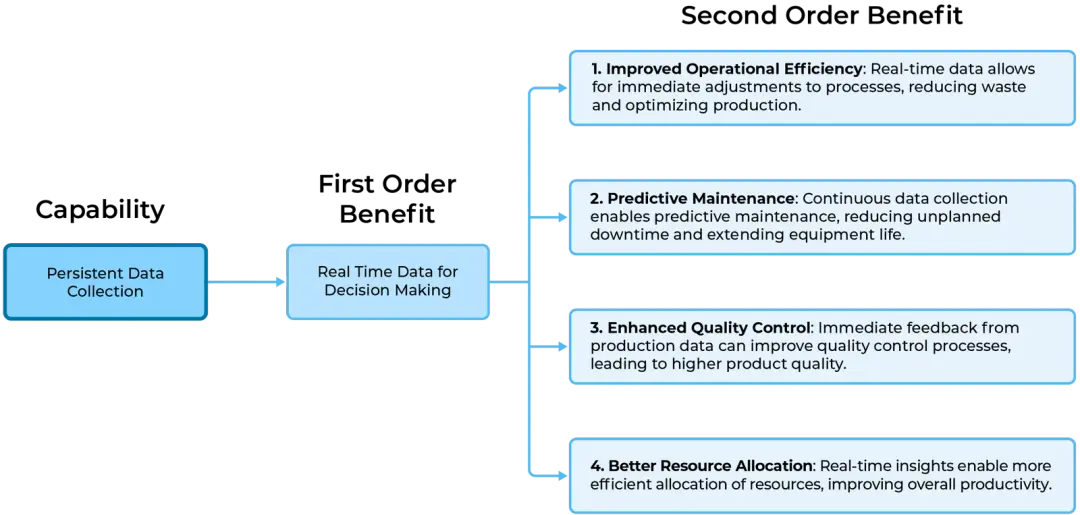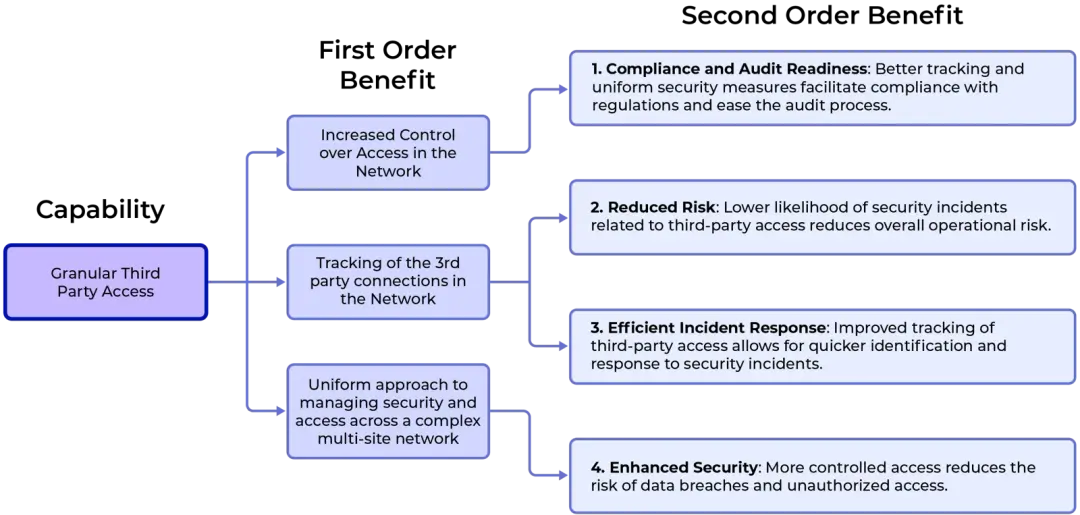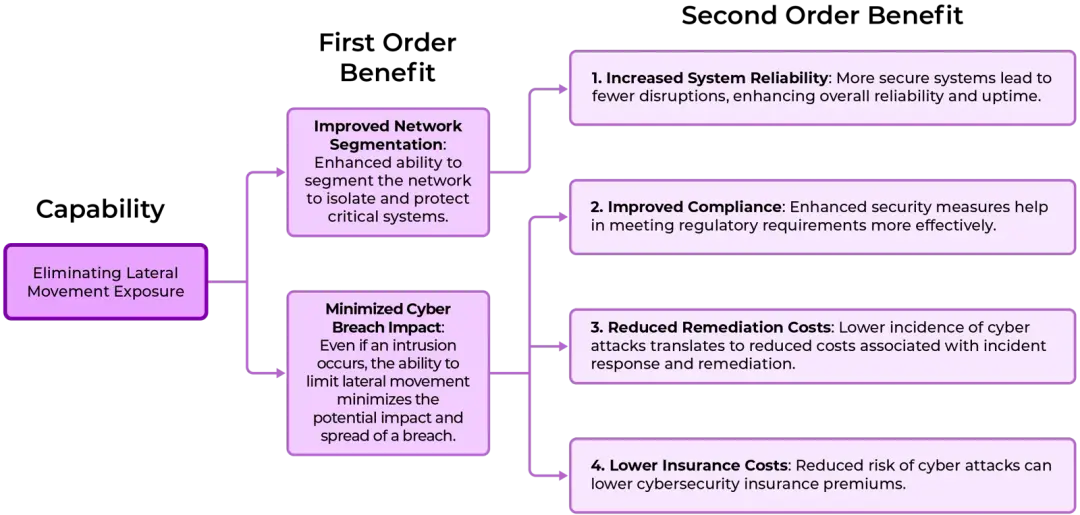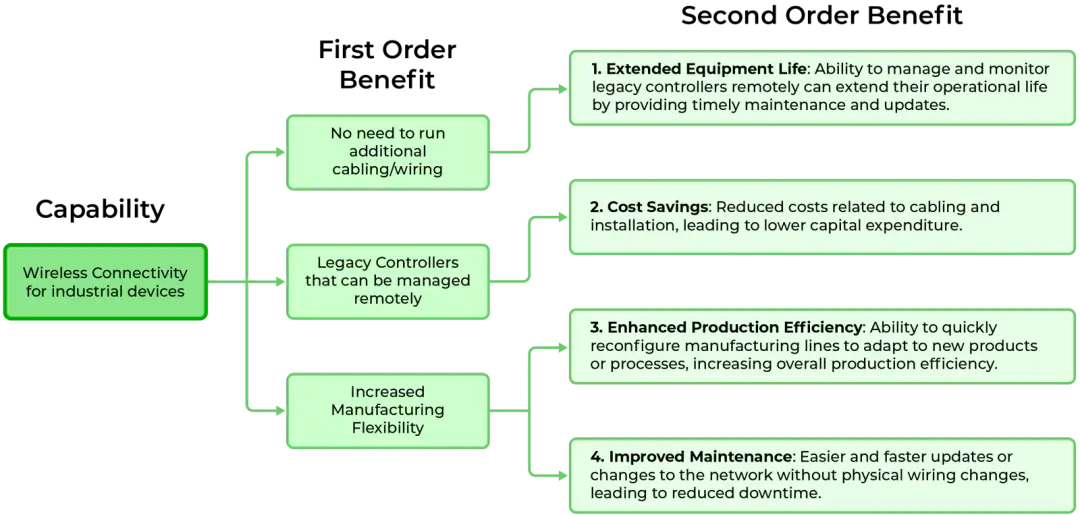🚀 New Byos Secure Embedded Edge in pre-order! Join the waitlist
How Microsegmentation Enhances OT Security: Insights for Network Security Architects
Microsegmentation | Operational Technology
August 27th, 2024

In today’s industrial landscape, the convergence of Operational Technology (OT) and Information Technology (IT) has introduced both efficiency and connectivity. However, it also brings new cybersecurity challenges. For a Network Security Architect looking to safeguard OT environments, and microsegmentation is a powerful tool in achieving this. This article explores how the four key capabilities of microsegmentation, particularly with the design of Byos’ microsegmentation platform —enables wireless connectivity for industrial devices, eliminates lateral movement exposure, remote management of legacy controllers, and increased manufacturing flexibility— delivers essential benefits for OT security.
1. Increased Manufacturing Flexibility: Data Collection for Adapting Securely to Change
The ability of microsegmentation to provide increased manufacturing flexibility is crucial for OT environments that need to adapt to changing production demands. This flexibility allows for secure adjustments to network configurations without compromising security.
Key Benefits:
- First Order Benefit: Operational Agility
Microsegmentation enables organizations to quickly and securely reconfigure their networks to meet new production requirements, ensuring that security keeps pace with change. - Second Order Benefit: Support for Innovation
Increased flexibility encourages innovation within the OT environment, allowing teams to experiment with new processes and technologies while maintaining robust security controls. - Third Order Benefit: Competitive Advantage
The ability to adapt quickly to market demands without sacrificing security provides organizations with a significant competitive edge, enhancing their position in the industry.
2. Granular Third Party Access and Remote Management of Legacy Controllers: Securing Critical Assets
Microsegmentation helps enable granular third-party access, allowing precise control over the access and permissions granted to external vendors, contractors, or partners. This capability is crucial in OT environments where third parties often need access to specific parts of the network for maintenance, monitoring, or other services. Byos’ microsegmentation platform is additionally designed to enable the remote management of legacy controllers, which are often critical to OT operations but may not be designed with modern security in mind. This capability allows organizations to secure these older systems without requiring expensive upgrades.
Key Benefits:
- First Order Benefit: Controlled Access to Critical Systems
By limiting third-party access to only the necessary segments of the network, microsegmentation minimizes the risk of unauthorized access to sensitive areas. - Second Order Benefit: Reduced Exposure to External Threats
Granular control over third-party access reduces the potential attack vectors that external parties could introduce, thereby strengthening the overall security posture of the OT environment. The ability to manage legacy controllers remotely reduces the need for on-site intervention, streamlining operations and improving overall efficiency while the greatly reducing the risk when connecting these devices to the network. - Third Order Benefit: Improved Vendor Management and Compliance
With detailed access controls, organizations can better manage vendor relationships and ensure compliance with regulatory requirements regarding third-party access and data handling.
3. Eliminating Lateral Movement Exposure: Strengthening OT Security
One of the most critical capabilities of microsegmentation is its ability to eliminate lateral movement exposure within OT networks. By segmenting the network into isolated zones, microsegmentation prevents attackers from moving freely across the network if they breach one part of it.
Key Benefits:
- First Order Benefit: Enhanced Network Security
By containing potential threats within a single segment, microsegmentation significantly reduces the attack surface and limits the damage that can be done by a breach. - Second Order Benefit: Faster Incident Response
With lateral movement restricted, security teams can more quickly identify and contain breaches, leading to faster incident resolution. - Third Order Benefit: Long-Term Risk Reduction
Preventing lateral movement reduces the long-term risk of widespread network compromise, contributing to the overall resilience of the OT environment.
4. Wireless Connectivity for Industrial Devices: Secure and Scalable Networking
Microsegmentation enables wireless connectivity for industrial devices, allowing for more flexible and scalable network designs without compromising security. This capability eliminates the need for additional cabling, which simplifies the deployment of industrial devices within OT environments.
Key Benefits:
- First Order Benefit: Simplified Network Infrastructure
Removing the requirement for extensive cabling reduces network complexity, making it easier to deploy and manage devices securely. - Second Order Benefit: Extended Equipment Life
Wireless connectivity, backed by microsegmentation, facilitates remote monitoring and management of industrial devices, extending their operational life while maintaining security. - Third Order Benefit: Scalability and Cost Efficiency
The ability to easily scale the network by adding new devices without extensive physical infrastructure leads to cost savings and greater operational flexibility.
Conclusion
For Network Security Architects, securing OT environments is a complex task that requires balancing robust protection with operational efficiency. The four capabilities of microsegmentation—wireless connectivity for industrial devices, eliminating lateral movement exposure, remote management of legacy controllers, and increased manufacturing flexibility—are essential in achieving this balance. By leveraging these capabilities, organizations can ensure their OT environments are secure, adaptable, and prepared for the future.
Byos’ microsegmentation platform was designed with the input and real-world challenges of Network Security Architects in mind, to create a uniform approach for managing security and access across a complex network of disparate devices. It eliminates internet exposure to production devices, protects against ransomware attacks, and streamlines remote access in a multi-site operation.
Byos’ Microsegmentation Solution has three main components:
- The Secure Gateway Edge™ ensures secure, reliable access to machine data through microsegmentation and granular access controls, with full compatibility for often neglected legacy devices. Microsegmenting assets ensures that the blast radius of any attack is contained to the smallest possible attack surface.
- The Byos Secure Lobby™ is a Software Defined Network (SDN) Overlay. It enables OSI Layer 2, 3, and 4 protections and access controls. Data capture and real-time monitoring of network devices, traffic, and user activities can continue without adding unnecessary exposure to the network.
- The Byos Management Console™ is a cloud-managed centralized control plane that enables simple centralized control of distributed unmanaged assets on uncontrolled networks, allowing for access control and management of third-parties and across different types of devices.
To further understand how Byos’ hardware-enforced microsegmentation can be a robust solution and delivers benefits and flexibility beyond conventional tools, click here to see a full video explanation or book a demo today.
Platform
Patented Technology. © Byos Inc. - Ashburn, VA. - All rights reserved. Byos Secure Edge™ hardware is manufactured in the USA, with a certified supply chain of components. FIPS 140-2 Validated (#4946)


